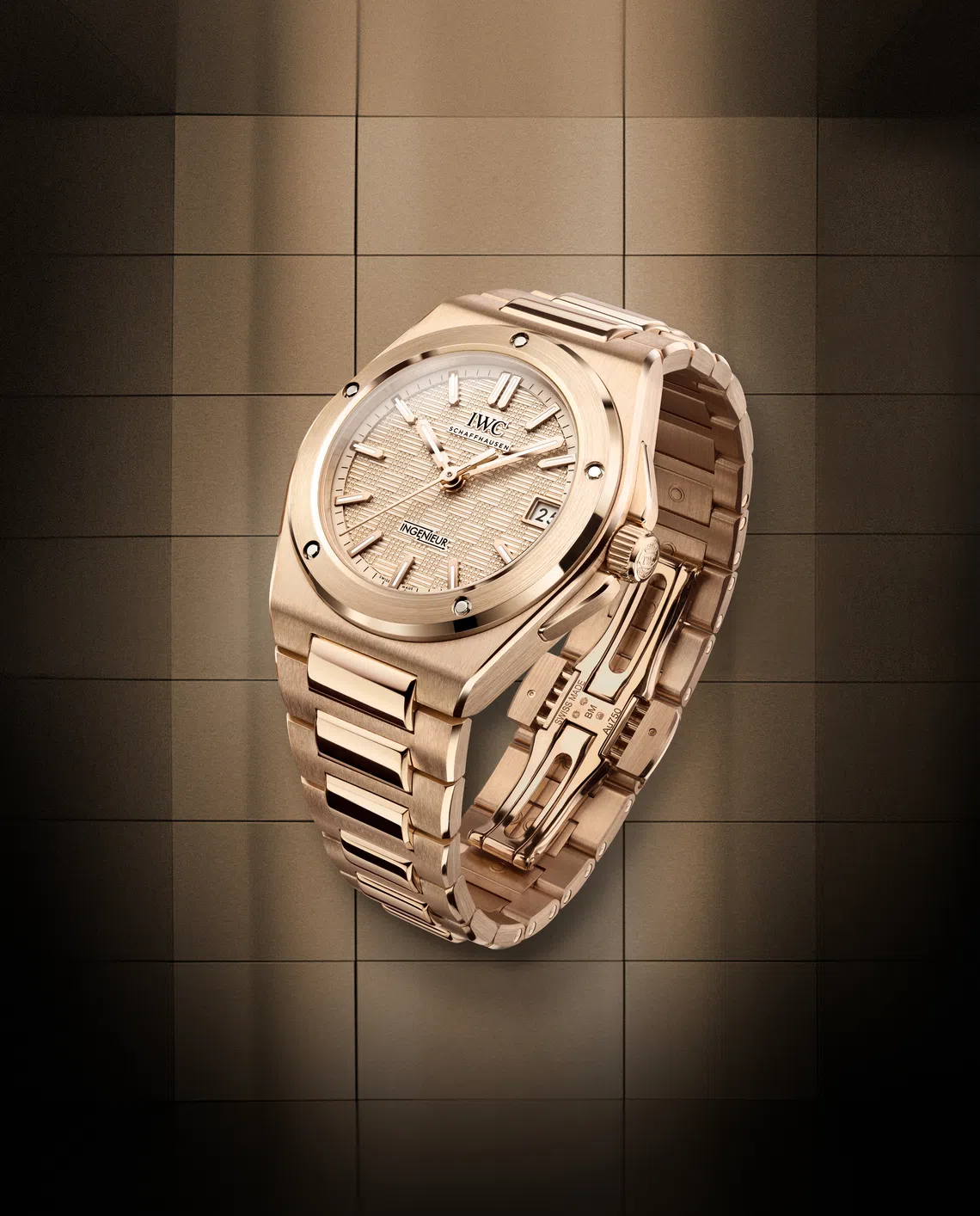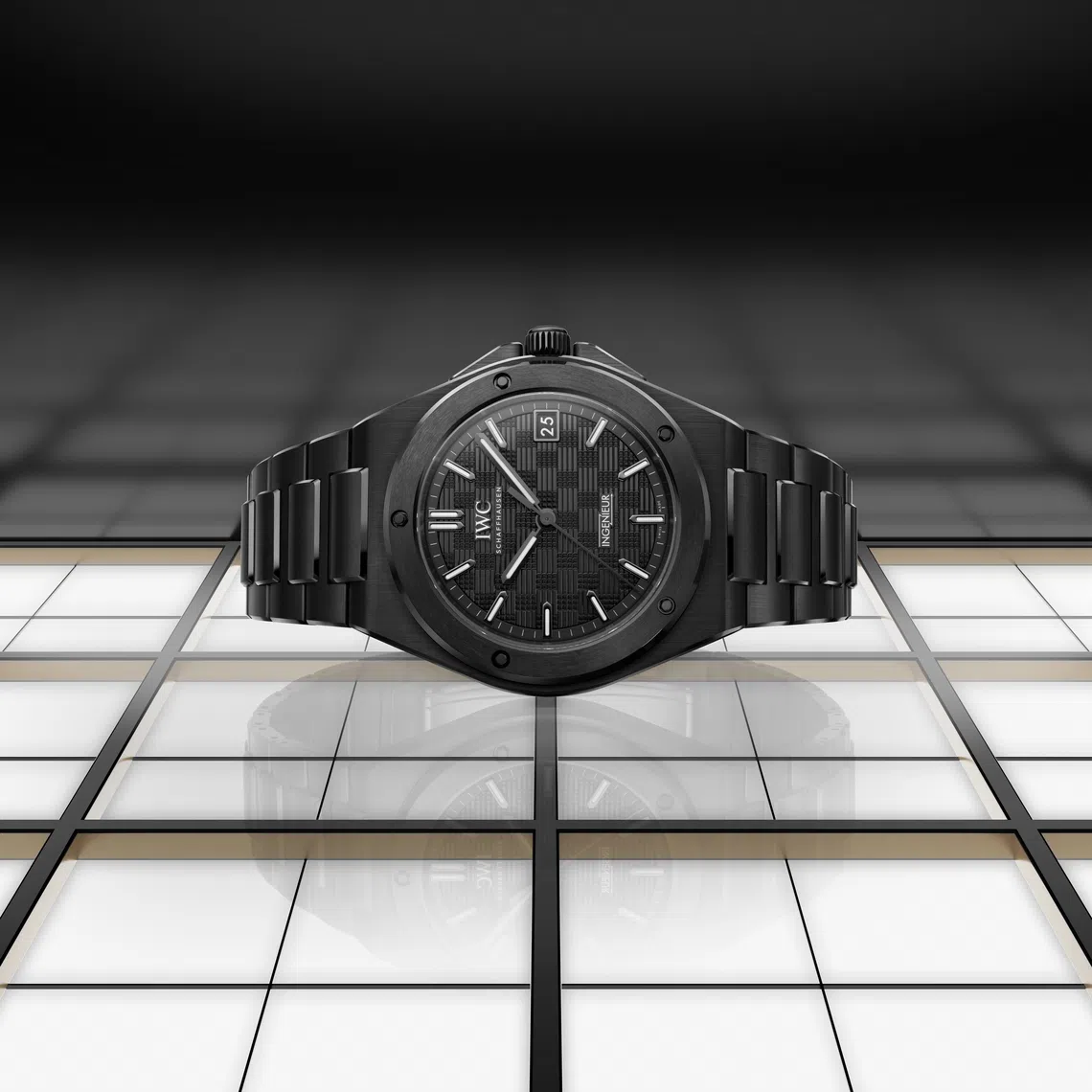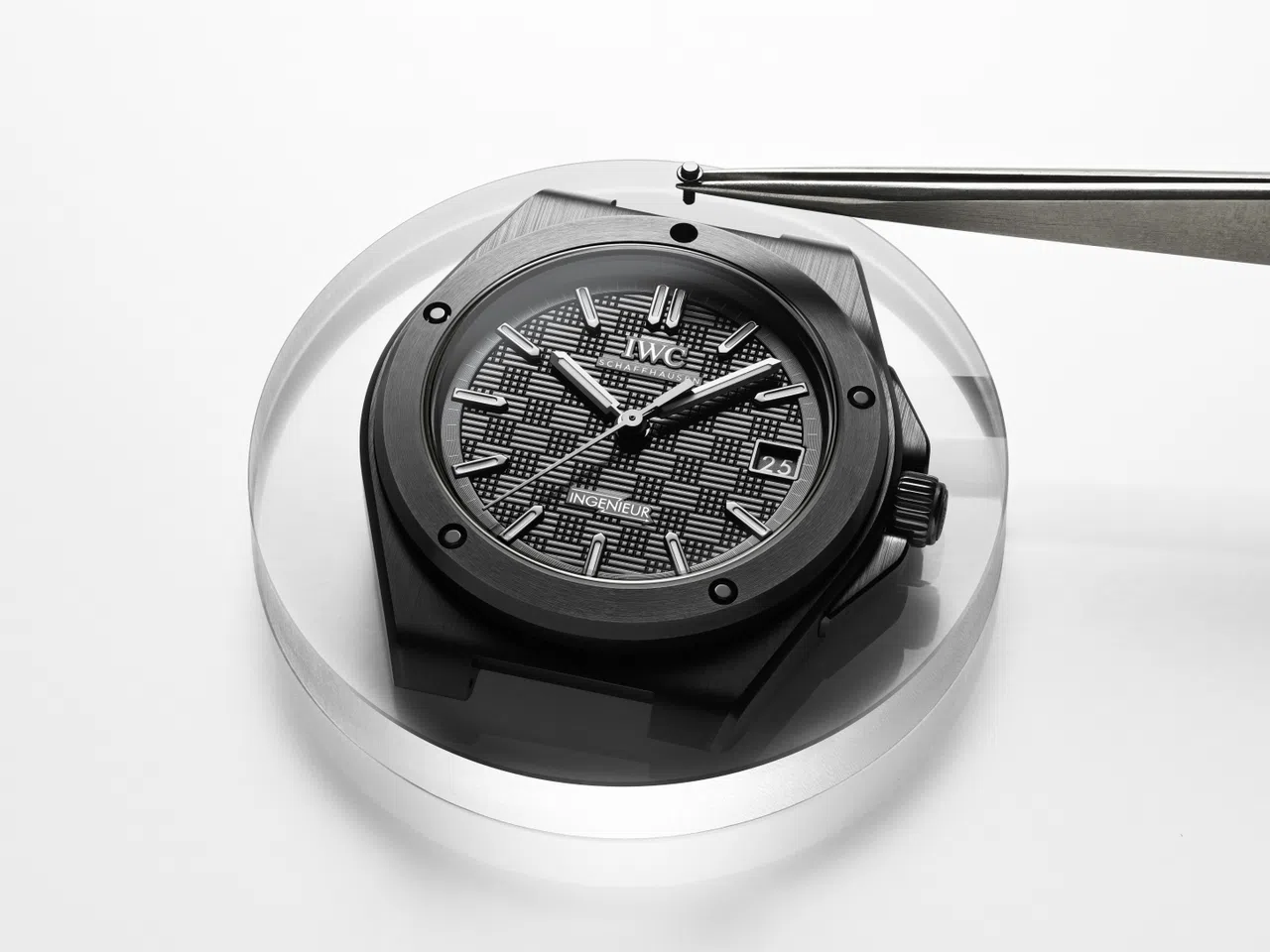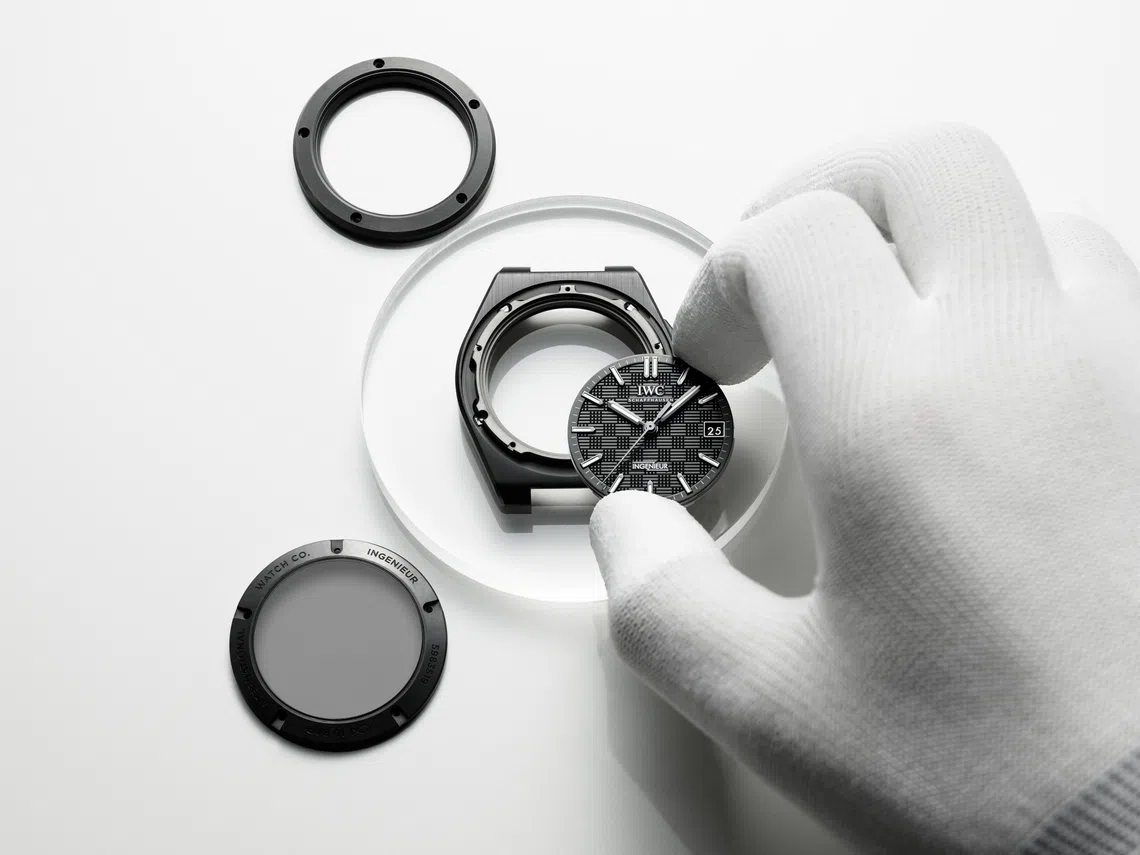IWC redefines a classic
The brand revisits its emblematic sports watch with two additions: the Ingenieur Automatic 35 in red gold and the Ingenieur Automatic 42
WHEN IWC Schaffhausen first unveiled the Ingenieur in 1955, it was a watch made by engineers, for engineers. Equipped with the manufacture’s first automatic movement and a soft-iron inner case to shield it from magnetic fields, the model embodied post-war optimism and technical progress.
In 1976, when the quartz crisis had a firm hold on the Swiss watch industry, IWC enlisted legendary designer Gerald Genta – fresh from creating the Audemars Piguet Royal Oak and Patek Philippe Nautilus – to rethink the watch.
The result was the Ingenieur SL, a bold, stainless steel sports watch with a screw-on bezel punctuated by five recesses, an integrated bracelet and a patterned dial.
While the Ingenieur SL was a radical departure for IWC from a design perspective, it struggled commercially. Powered by the calibre 8541, its case was deemed too bulky, even earning it the nickname Jumbo.
Priced at CHF2,000, a steep price for a stainless-steel watch in the mid-1970s, it was ahead of its time. Fewer than 1,000 pieces were produced, and the model quietly faded from IWC’s catalogue.
In retrospect, the watch was a breakthrough; it was among the pioneering steel luxury sports watches of its era that established a new Swiss watch design language, and cemented Genta’s place in the industry as a visionary.
Today, the Ingenieur SL is revered by collectors as a cult classic, prized precisely because it was deemed too bold for its day. Its DNA has since become central to IWC’s modern identity, as it continues to reinterpret the watch with contemporary movements, refined proportions and innovative materials.
Following the Ingenieur’s revival in the Automatic 40 launched in 2023, the Schaffhausen manufacture has now further extended the line with two striking references: the Ingenieur Automatic 35 in red gold and Ingenieur Automatic 42 in black ceramic.
Together, they illustrate how IWC channels heritage into two very different directions: one steeped in refinement, the other pushing into technical innovation.

Ingenieur Automatic 35
The most compact model in the collection, the new Ingenieur Automatic 35 in red gold mirrors the same enhanced ergonomics and detailed finishing as the 40 mm version from 2023.
At just 9.4 mm slim and water-resistant to 100 m, it stays true to its technical roots.
The bezel retains the Ingenieur’s characteristic five functional screws and combines a satin-brushed top with a polished outer bevel. The case flanks and H-link bracelet, meanwhile, alternate between brushed and polished planes, lending texture and reflecting light beautifully.
The dial is unmistakably Ingenieur, featuring the hallmark grid motif of intersecting small lines and squares in a warm gold tone to match the case.
Other details include solid gold appliques and gold-plated hands, an intricately framed date aperture at 3 o’clock, as well as hands and markers filled with Super-LumiNova for legibility in low light.
The bracelet is attached via the polished middle links for improved ergonomics at this size, resulting in a watch that sits flat and feels substantial without heft.
The watch is equipped with the automatic calibre 47110, which is visible through a sapphire case-back. With a 42-hour power reserve, circular graining, Geneva stripes and gold-plated oscillating weight, the movement complements the watch’s refined profile.
Also enriching the line are two 35 mm stainless steel references: one with a silver-plated dial, and the other with a black dial. Each has rhodium-plated hands and appliques, as well as the same finishings on the case and bracelet.

Ingenieur Automatic 42
The Ingenieur Automatic 42 embraces modernity with the first full-ceramic take on Genta’s integrated design – executed in black zirconium-oxide ceramic from case to crown to bracelet.
Ceramic is exceptionally hard and scratch-resistant, lighter than steel and stable across temperature changes – all ideal qualities for a daily sports watch. IWC brings nearly 40 years of know-how here, having developed the world’s first watch with a black ceramic case in 1986.

Staying faithful to the original blueprint, the manufacture devised a three-part ceramic case reinforced by an internal titanium ring. Five functional screws secure the bezel and case-back to this ring, which also holds the movement and underpins the watch’s 100 m water resistance.
Both front and back sapphires are pressed directly into ceramic, an engineering feat given the material’s hardness and notorious brittleness. The watch’s 42 mm by 11.6 mm case size keeps the profile perfectly proportioned for an all-ceramic sports piece.

With a hardness of roughly 1300 Vickers, zirconium oxide ceramic is among the hardest materials on earth and can be cut only with diamond-tipped tools after sintering.
IWC pushes the boundaries in ceramic finishing here. Case components are satin-finished and treated with a smooth sandblasting, with a delicate polishing around their edges. Bracelet links boast the same treatment with a combination of satin-finishing, sandblasting and polishing.
This complex, multi-stage finishing results in a refined aesthetic, offering perfect light play against the black surfaces. The monochrome dial continues the theme with the Ingenieur’s grid pattern, while blackened hands and markers filled with Super-LumiNova preserve low-light visibility.
Powering the watch is the in-house calibre 82110 with a 60-hour power reserve and IWC’s Pellaton winding system. Its virtually wear-free components – automatic wheel, clicks and rotor bearing – are rendered in ceramic for longevity.
A tinted sapphire case-back keeps with the stealth aesthetic, while revealing the movement beneath.
Decoding Asia newsletter: your guide to navigating Asia in a new global order. Sign up here to get Decoding Asia newsletter. Delivered to your inbox. Free.
Copyright SPH Media. All rights reserved.

